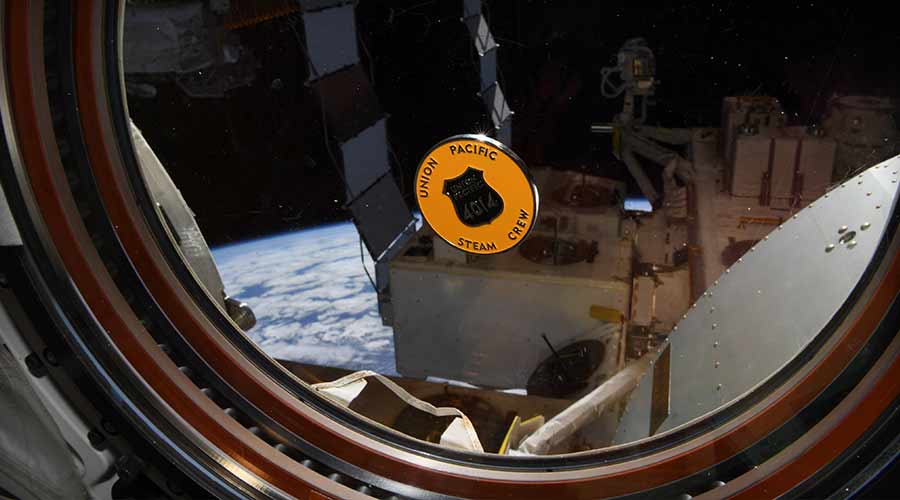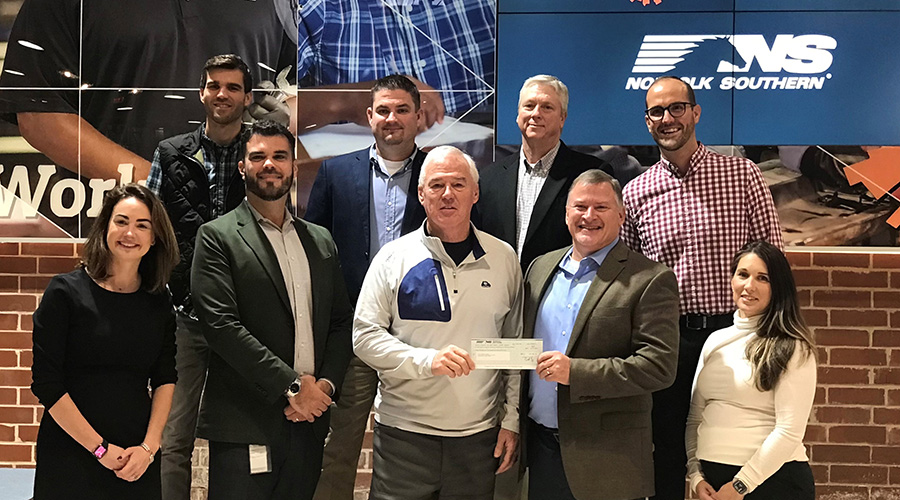Reach for the stars: Piece of UP history part of astronaut's space mission
9/22/2022
By Grace Renderman, Associate Editor
You don’t usually equate railroads with space, but one little piece of Union Pacific Railroad history made its way to the International Space Station and back last year.
Between April and October 2021, the Class I’s “Big Boy” No. 4014 challenge coin completed a journey to the stars with NASA astronaut Megan McArthur as one of her personal items. While there, she and the coin revolved around the Earth 3,194 times, which is equal to 84 million miles.
McArthur traveled with the coin to honor her eight-year-old son, Theo, who loves trains. But the astronaut also has a similar fascination — a nod to her background as an aerospace engineer.
“We love trains in my family,” McArthur tweeted from space in May 2021. “One day, I will take my son to see the reenactment at #GoldenSpike, and we are definitely going to chase down #UP4014 when I get back on Earth.”
So what’s the full story behind the coin? Challenge coins are popular with members of the military and police as a commemorative piece to represent ties to the railroad, UP Museum Curator Patricia LaBounty says. This particular Big Boy coin was produced in a limited batch by a UP steam stop in Cheyenne, Wyoming, in 2019. They are not commercially sold — they must be received personally from a Big Boy locomotive engineer.
The coins are two inches in diameter, double-sided and embossed with heavy metal and the No. 4014 shield.
“The coin itself is special only because it says 4014 on it, in the shield,” LaBounty says. “When Megan contacted me, she said that she had some space to take a personal item into space with her. And because of her and her son's love of steam locomotives, she wondered if she could take something that was representative of the steam program to space with her.”
UP No. 4014, or Big Boy, is a retired locomotive built exclusively for the Class I in 1941. It was retired in 1961. Weighing in at 1.2 million pounds, the locomotive earned the nickname Big Boy because of its long length at 132 feet. It traveled just over 1 million miles while in service between Ogden, Utah, and Cheyenne. No. 4014 is one of 25 Big Boys, seven of which are on display in various areas of the country.
 Built in 1941 and retired 20 years later, steam locomotive No. 4014 earned the nickname Big Boy because of its long length at 132 feet. Union Pacific Railroad
Built in 1941 and retired 20 years later, steam locomotive No. 4014 earned the nickname Big Boy because of its long length at 132 feet. Union Pacific RailroadOnce McArthur returned the coin to the railroad in August 2022, the museum placed it on display. It will go back into storage at year’s end, LaBounty says. However, Theo also received a coin to keep permanently as a memento of his mom’s trip to space.
To celebrate the coin’s return, the Council Bluffs, Iowa-based museum hosted a special event Aug. 27 with NASA to educate hundreds of local students about space and “all things STEAM,” LaBounty says. An alternative form of the STEM acronym, STEAM stands for science, technology, engineering, arts and mathematics. McArthur spoke to the students, signed autographs and posed for photos.
“She had tiny little astronauts who were so excited about going to space in their spacesuits, and then she had college students and teachers who were wanting to talk to her about her experience,” LaBounty says. “It was a beautiful community event.”
It makes sense that an astronaut would take interest in steam locomotives — they’re a “rich opportunity for imagining engineering in motion,” LaBounty says. While steam locomotives have long been replaced with more modern and efficient models, the type of technology and innovation involved in building them will never cease to resonate with people, she adds.
“The railroad is continuing forward, and [the coin going to space] is just underscoring that,” LaBounty says. “It's still relevant, and it still has an impact. A lot of people, when they think about railroads or see train tracks, really feel like they're looking at something that's not innovative. But it is.”


